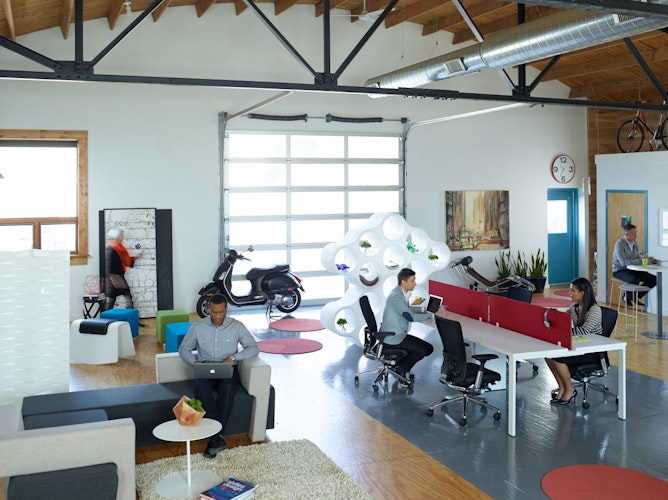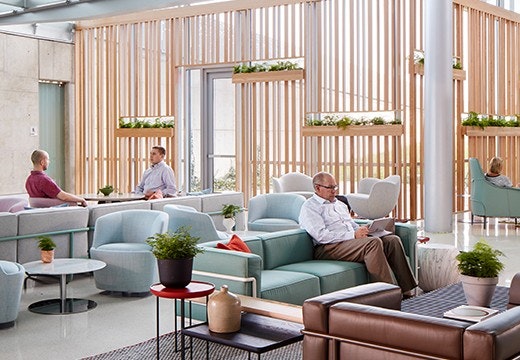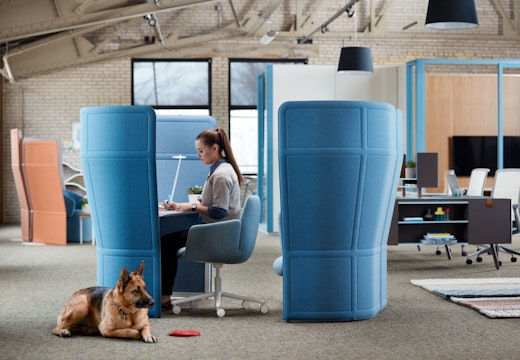Six ways to cut ties with structured work
People want more flexibility at work, but how can we cut the ties to that bind us to traditional work structures in the office?
Not surprisingly, ‘flexible’ and ‘flexibility’ are two of the most popular search words related to work benefits. The future of how, where, and when we work is evolving at an extremely fast pace. People no longer want—or need to be—tied down to the traditions of the past. Technology is changing the way we work, and today’s business trends are following right along—opening doors to a more efficient, convenient, and fulfilling work-life balance.
See how these six business trends are cutting the ties that bind, making work more flexible—and enjoyable:
1 24/7 Work-Ability – not tied to a schedule
This is either the most feared or the most welcomed flexibility trend in work today. Those who oppose it, however, may find themselves left behind. Proponents love the ability to work when it works for them—and when their employers are supportive, it makes all the difference. After all, who wants the ability to work at 3 am, if you’re still being required to report to the office from 9 to 5 every day?
Used to its full advantage, open availability can work for both employees and employers. The key is finding (and maintaining!) the perfect blend of work and personal life. A Workfront blog article asks, ‘If you’re in that email inbox by 6 am and still fielding requests at 8 pm., should it really matter if you disappear from the office from 12-3 pm’ Honest answer: Not if you’re getting the work done and supporting your team. Leaders who understand this will find they have happier, more engaged, loyal employees.
2 The Gig Economy – not tied to a job
Millennials graduated from college in an era where jobs were scarce—let alone, careers in their fields of study. They fiercely competed for work and took jobs where they could find them, out of necessity. During that time, temporary work and freelancing became more prevalent as viable income alternatives.
As a result, contract work now seems ‘normal’ to this entrepreneurial generation. To many Millennials, it’s even preferable—especially today, when being a nomadic freelancer or short-term worker offers not only the flexibility of when and where to work, but higher incomes and perks from businesses competing for talent. In fact, according to strategy+business, freelancing and gig work is now beginning to attract the attention of GenZers entering the workforce, while becoming increasingly popular with Gen X and Baby Boomers, as well.
To make the most of this Gig Economy, a Deloitte article in the Wall Street Journal suggests that organisations should offer competitive compensation, programs for learning and development, and more opportunities for people to prove their drive, strengths, and skills.
3 Mobility and Movement – not tied to a space
Our bodies were made to move. Doing so keeps us happier and healthier. Organisational leaders who understand this tend to attract and retain more engaged, productive employees. In an agile environment, work can take place anywhere—even when we’re on the move from place to place.
According to Inc., walking meetings allow employees to break away from their workspaces and build physical activity into the workday. These on-the-go conferences create casual and comfortable communication experiences that yield improved health for decreased healthcare costs and a lower number of sick days, greater inspiration and collaboration for creativity and innovation, and better working relationships between managers and employees as they walk side-by-side.
There are other ways to give employees a little healthy nudge and get them moving too. Offering a variety of inviting spaces for people to choose from encourages them to walk to a new area for a change of scenery, while giving them alternative places to work, collaborate, or just rest and recharge. Incorporating height-adjustable workstations and standing-height tables in the work environment gives people the ability to move around and change postures during the day, as well.
4 Wi-Fi Anywhere – not tied to the inside
As human beings, we’re drawn to nature. We paint it. We photograph it. We want to be a part of it. Now, with Wi-Fi making the outdoors more technologically accessible, there’s no reason we can’t get a little fresh air while we work. In fact, Haworth Senior Workplace Strategist John Scott says that the outside is becoming the new ‘in’. In A Different Path for Thinking, he explains that stepping outdoors to meet with your team or converse with a coworker has been shown to lower blood pressure, while activating creativity in the whole brain. And happy, healthy teams are more engaged and productive.
Today, according to Slate, giants like Amazon, Apple, Facebook, L.L. Bean, and Microsoft are embracing the outdoor movement, each experimenting with adding different outdoor settings from botanic gardens to tree houses to green roofs. This lends some credibility to the trend, but these players do have some pretty hefty budgets to work with. All you really need to get started is some comfortable furniture on a Wi-Fi enabled patio, balcony, or rooftop. You may be amazed by how simple it can be to create an outdoor social and collaborative space people will love to work in—or should we say, ‘out?’
5 Virtual Meeting Rooms and Offices – not tied to a location
In a world where we can now use FaceTime to connect with up to 32 people at once, remote communications capabilities are expanding every day. The ‘office’ is becoming more of a concept, rather than a physical place. However, teams are still expected to come together for collaboration and sharing of knowledge—even if they’re not in the same location. Enter, virtual meeting rooms and offices.
Meetings in virtual office spaces are not standard conference calls—or even videoconferences. They are similar to in-person gatherings, but in digital destinations where invitees can participate in real-time collaborative work in various ways. Virtual tools can help people stay connected and productive, whether they’re a floor away or a world away. Here are some examples:
- Online community platform, Slack, allows users to create secure channels based on teams, projects, clients, etc. and use those channels to ask questions, share files and feedback, access work tools and services, and generally communicate to get work done together.
- Haworth’s technology tool, Bluescape, gives authorized users a nearly infinite collaborative canvas for presenting visuals and designs, sharing files and ideas, and even brainstorming, so everyone can see the whole picture and stay on the same page—from anywhere in the world.
- And then, there are virtual coworking spaces, which encompass all the communal aspects of the office. Some even show you a virtual office floorplan, with avatars and office space for each employee. People can move from room to room for meetings and collaborate, or simply shut a virtual door for privacy.
6 In-Office Mobility – not tied to a desk
When we think of flexibility at work, we often think about our freedom and ability to move from place to place outside our office surroundings. But, what about furniture and tools that have the ability to move around us—within our office spaces? This is becoming more of a trend, providing flexibility and variation for changing workstyles, as well as easy-to-reconfigure spaces.
In-office mobility is no longer just limited to desk chairs on casters, though they are definitely the forerunners of this movement. Now, entire workstations are mobile, allowing people to move from place to place within the office on a moment’s notice. Travelling worksurfaces and whiteboards on wheels bring collaboration tools to any open space.








